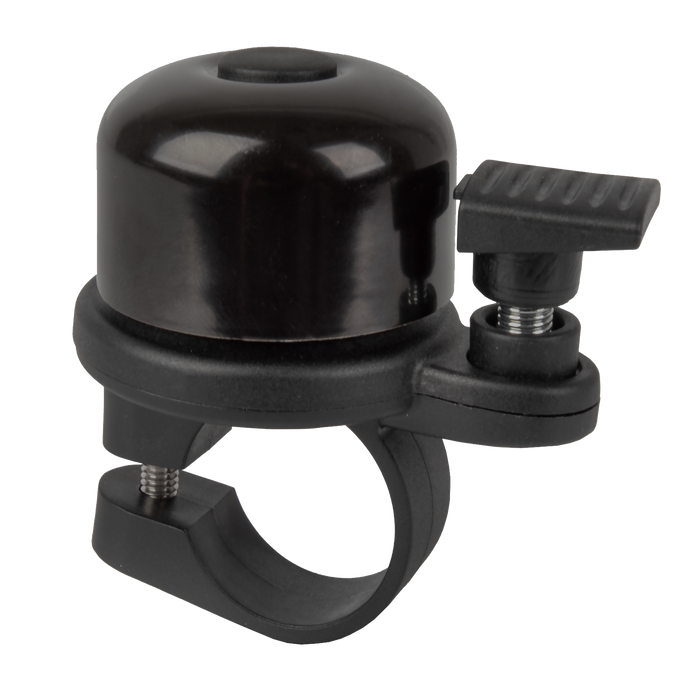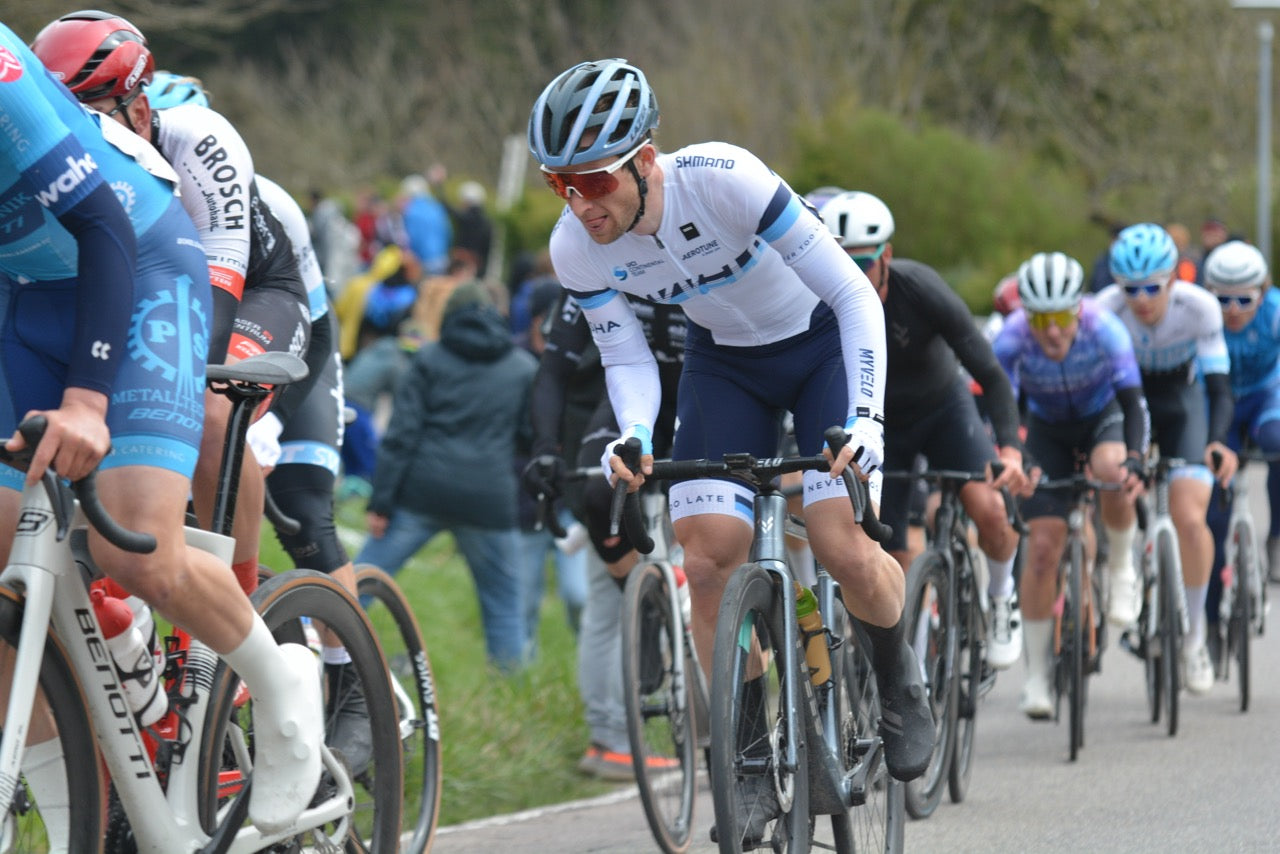
AirBell® Mini Bell for Airtag
incl. FREE shipping & free returns

Von Lukas Vogt |
4 minutes read time

When it comes to road bikes, speed, efficiency and aerodynamic design are often the main focus. A bell is not one of the obvious components that you associate with a road bike. But if you are on a busy road or a narrow bike path, you will appreciate the importance of a good road bike bell.
In this article, you will learn why a bell is indispensable, which models are particularly suitable for racing bikes and what you should pay attention to when buying one.
In many countries, including Germany, a bell is mandatory according to the road traffic regulations. But apart from the legal situation, a bell offers clear advantages:
Road cyclists place great value on minimal air resistance and low weight. A bulky bell doesn't fit into the picture. In addition, road bike handlebars are often thinner or aerodynamically shaped, which requires special mounting systems.
When choosing a bell for your racing bike, the following points are crucial:
Here are some models that are specifically designed for racing bikes:
Knog Oi Bell
This bell is a favorite among road cyclists. With its sleek, minimalist design, it fits perfectly around the handlebars and is barely noticeable. It comes in a variety of sizes so it fits both standard and aero handlebars.
Spurcycle Bell
This premium bell features high-quality stainless steel and a clear, sustained sound. It is a little more expensive, but durable and stylish.
Crane E-Ne Bell
A traditional bell with a modern touch. The E-Ne Bell is lightweight, compact and offers a pleasant but piercing tone.
AirTag bells
For technology fans, there are now bells that offer an integrated AirTag holder . This means you can not only ring the bell, but also locate your racing bike if it gets stolen.
The position of the bell plays an important role. It is best to mount it so that you can easily reach it with your thumb without changing the position of your grip. Especially on racing bikes, it is recommended to mount it on the upper part of the handlebars or near the brake levers.
Road cyclists often invest a lot of time and money in optimizing their setup in order to be as efficient as possible. This raises the question: can a bell on the handlebars really influence aerodynamics and thus energy consumption?
The aerodynamics of a racing bike are affected by any additional object on the handlebars, as this can increase air resistance. A bell, even if it is small and compact, changes the flow conditions around the handlebars.
Size and shape of the bell: A bulky bell creates greater turbulence and therefore more air resistance. Models with a flat, streamlined design minimize this effect.
Position on the handlebar: A central or concealed mounting reduces the negative aerodynamic effects.
Speed: The faster you ride, the greater the influence of air resistance. While the watt losses are barely measurable at leisurely speeds below 25 km/h, they could increase minimally at 40 km/h or more.
Studies on watt losses caused by a bell show that the effect is usually negligible when using a bell specifically designed for racing bikes. At speeds of around 30 km/h, the additional air resistance caused by an unobtrusive bell such as an Airtag bell could be less than 0.5 watts - a value that is hardly significant even on longer rides.
However, larger or poorly placed bells can double or triple this value. For ambitious riders who count every second, it is therefore worth investing in aerodynamic models.
A road bike bell is a small but essential accessory that not only increases your safety, but also that of those around you. Thanks to modern, aerodynamic designs, there are now models that fit perfectly on a road bike without compromising style or speed.
Invest in a high-quality bell that is light, loud and easy to install - and enjoy your road bike adventure with a safe feeling! 🚴♂️

Sprintintervall-Training (SIT) ist eine der effizientesten Methoden, um die Leistungsfähigkeit auf dem Rennrad zu verbessern. Durch kurze, hochintensive Sprints mit langen Erholungsphasen lassen sich sowohl die aerobe als auch die anaerobe Kapazität optimieren.

Ob lange Anstiege in den Alpen oder kurze, knackige Hügel im Mittelgebirge – das Fahren in bergigem Terrain stellt besondere Anforderungen an Technik, Kraft und Ausdauer.

Als Rennradfahrer möchte man möglichst ständig besser werden: schneller, ausdauernder und effizienter. Doch was, wenn der Schlüssel zu diesen Zielen nicht nur auf zwei Rädern liegt? Rudern, oft unterschätzt, bietet eine ideale Ergänzung zum Radtraining. Es trainiert nicht nur den ganzen Körper, sondern verbessert auch die Ausdauer, Kraft und Stabilität – entscheidende Faktoren für jeden Radsportler.